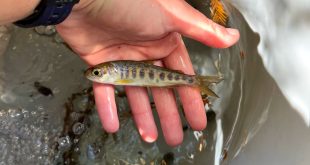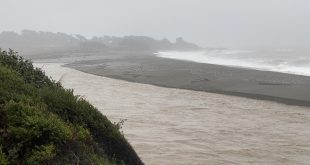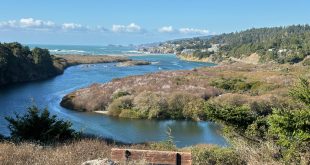Sonoma County Regional Parks, in partnership with California Native Plant Society – Dorothy King Young and Milo Baker Chapters, and Friends of the Gualala River, is embarking on a wild land weed control project at Gualala Point’s coastal bluff and sand spit.
 The target is bush lupine, one of the most troublesome wildland weeds of the North Coast’s dunes, bluffs, and sandy headlands. It was first recognized as non-native and invasive on the North Coast by dune managers in Humboldt County in the late 1980s.
The target is bush lupine, one of the most troublesome wildland weeds of the North Coast’s dunes, bluffs, and sandy headlands. It was first recognized as non-native and invasive on the North Coast by dune managers in Humboldt County in the late 1980s.
This species is native to moist coastal sands of the Central Coast, north to the Sacramento River, where it occupies a relatively modest niche. It was planted artificially for stabilization and reclamation of mobile coastal dunes, following initial stabilization by European beachgrass.
Beachgrass-bush lupine reclamation was practiced in the late 19th and early 20th century from San Francisco’s Golden Gate Park to North Coast and Oregon dunes. In its artificially extended northern range, it dominates many plant communities.
Bush lupine thrives in the higher moisture of North Coast dunes and bluffs, where it rapidly dominates and replaces diverse native dune scrub and coastal bluff scrub.
The large amounts of nutrient-rich leaf litter produced by this large nitrogen-fixing shrub fertilizes and facilitates invasion by other coastal weeds, such as Australian fireweed, non-native thistles, and many Mediterranean grasses. Bush lupine also out-competes, and hybridizes with, local native populations of coastal lupines such as the small, varied-color lupine.
Bush lupine produces large amounts of long-lived seeds that persist in the soil. Successful removal can take many years of dedicated, persistent stewardship.
Many successful community-based projects based on manual removal of bush lupine have been pioneered and implemented in Humboldt Bay. There is still a lot of the Sonoma Coast where bush lupine remains at the early stages of invasion that are most feasible and efficient for control.
 Friends of Gualala River Protecting the Gualala River watershed and the species living within it
Friends of Gualala River Protecting the Gualala River watershed and the species living within it


